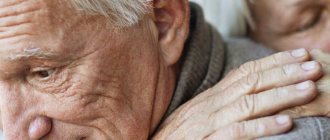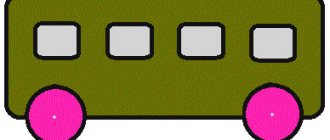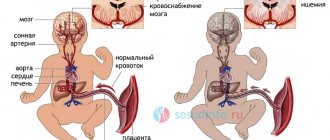Diseases that begin with the letter “N”: Narcolepsy, Drug addiction, Corns, Neuralgia, Sciatic nerve neuralgia, Trigeminal neuralgia, Neurasthenia, Neuritis, Neurosis, Miscarriage, Urinary incontinence, Neurodermatitis, Neurosyphilis, Neurocirculatory dystonia, Lactose intolerance, Nephritis, Nephroptosis (wandering kidney, prolapsed kidney).
Mental and physical stress that lasts for a long time does not benefit anyone and can cause the development of neurasthenia. This disease refers to a dysfunction of the central nervous system. Neurasthenia is a type of neurosis. The result of the disease is depletion of the human nervous system. Lack of treatment provokes the development of a chronic form of the disease.
In medicine, neurasthenia is divided into the following types:
- hypersthenic;
- hyposthenic;
- sexual
A representative of any gender can “earn” neurasthenia. However, men are slightly more susceptible to this diagnosis. The age category of the disease is between 20-40 years.
Symptoms of depression
Depression is a long-term disturbance of emotional balance that significantly impairs a person’s quality of life. It can develop as a reaction to bad events (such as someone’s death, job loss, etc.), but quite often it occurs without obvious reasons.
There are two important points to be aware of.
- Realizing your problem and talking about it means taking the first step towards recovery.
- Treating depression is a relatively simple procedure.
As for the typical signs of this condition, they include:
- thoughts of suicide;
- sadness, melancholy and anxiety;
- excessive concern about one's health;
- problems sleeping (a person may wake up very early);
- migraines, back or heart pain;
- loss of interest in food, work and sex;
- weight loss/gain;
- feelings of failure, hopelessness and guilt;
- problems with concentration;
- permanent fatigue.
It is quite difficult to recognize depression in representatives of the stronger sex. This is explained by the fact that, firstly, many people mistakenly believe that sharing their problems with someone is a sign of weakness, and secondly, men tend to hide a depressive state behind alcohol abuse and aggressiveness. In addition, a person can actively play sports, throw himself into work, or get carried away by gambling. And all these are clear signs of male depression.
So, the described state can be recognized by:
- burnout syndrome;
- instability to stress;
- thoughts of death, suicide;
- uncertainty in making a decision;
- impulsive behavior;
- hostility, aggressiveness;
- alcohol abuse, alcoholism.
Depression in women
According to statistics, female depression is much more common than male depression. It is difficult to determine why this happens, although most psychiatrists (in particular, this is discussed in “Depression” written by V.L. Minutko) believe that gender is not a biological prerequisite for the disorder being described.
Minutko, V.L. "Depression"
And the cause of a large percentage of female depression is considered to be social preconditions present in any society. Women are more often exposed to stress and visit doctors more often, which, in fact, explains these statistics.
Note! Childhood depression occurs equally often, but already in adolescence, girls emerge as “leaders”.
How to process the results?
Each item must be scored from 0 to 3. The total score can range from 0 to 63, the lower it is, the better the person’s condition.
The results are interpreted as follows:
- from 0 to 9 – no depression;
- from 10 to 15 – mild depressive state;
- from 16 to 19 – moderate;
- from 20 to 29 – average depression;
- from 30 to 63 – severe form of depression.
If you notice symptoms of depression, you must consult a doctor immediately. As for treatment, it can be done both with the help of psychotherapeutic methods and with the use of medications.
Video – Consequences of depression
Stress and anxiety are an integral part of the lives of most modern Russians. But everyone’s reaction to events is different and depends on the strength of the nervous system. Many people underestimate the danger of such behavior - it can provoke a mental disorder if diagnosis is not carried out in time and therapy is not started. Many people try to avoid visits to doctors, but there is a technique available to everyone - a test for neurosis. But you should not resort to treatment after it without consulting a doctor. Testing helps to see the prerequisites for neurosis, which should not be ignored.
Methods for treating neurosis
Experts suggest fighting the disease using an integrated approach. This includes drug therapy, physical activity and proper nutrition, sleep and wakefulness, and moderate mental stress.
Drug therapy
Medicines, first of all, are antidepressants that are involved in the uptake of serotonin, dopamine, and norepinephrine. In addition, such drugs help block the enzyme that destroys these hormones. This allows you to increase their volume in the general bloodstream and thereby improve your mood.
These medications do not affect a person’s condition while driving a vehicle and are not addictive, but their effect occurs only a few weeks after the start of use. The duration of the course of therapy can reach 2-3 months.
There are also newer generation antidepressants that are considered safer and have fewer side effects. The duration of therapy and daily dose are determined only by the attending physician. Taking medications on your own without consulting a neurologist is highly undesirable.
Another effective remedy is drugs from the group of tranquilizers, which affect the transmission of nerve impulses in the brain, which makes it possible to slow down the activity of the nervous system and reduce a person’s reaction to a specific stimulus. The drugs have a sedative and anti-anxiety effect on the body.
Psychotherapeutic treatment
Personal psychotherapy allows a person suffering from a nervous disorder to build a picture of his personality and establish the cause that led to neurosis. A doctor helps change a person’s view of the world around him. Recovery occurs if the patient, with the help of a specialist, understands the cause of his fears and worries.
Meditation is also often used. With the help of psychoanalysis you can understand your inner world. Meditation can reduce anxiety and create new beliefs about specific situations.
Diet therapy
A proper diet during neurosis can reduce the load on the body. It is worth eating small portions 4-5 times a day, adding vegetables and fruits to your diet. They contain a high concentration of vitamins and fiber, which is a building material for all body systems.
It is also best to exclude sweets, flour, fried, and highly salty foods. Avoid strong and carbonated drinks. And also do not forget about the drinking regime, at least 1.5 liters of clean water per day.
Breathing exercises and massage
Physical exercise helps normalize the activity of parts of the brain such as the cortex and subcortex, as well as stimulate and calm the nervous system.
At the initial stage of gymnastics, simple exercises are performed that do not involve impact on the muscles and do not require concentration. Over time, the load must be increased. And breathing exercises improve blood circulation in the internal organs and in the brain, which allows you to get rid of pain.
Prevention of the development of neurosis
To prevent the development of neurosis, you need to exclude stressful situations and emotional overloads. Take breaks from work when you are doing heavy mental work.
Do things that are enjoyable and relaxing or soothing. Also suitable for prevention are meditations, which completely relax the body and mind and lift your spirits.
And don’t forget, if you feel constant panic attacks, a decline in emotional state, or other alarming symptoms of neurosis, consult a specialist.
General information about neuroses
Neuroses refer to disorders occurring in the human psyche and nervous system. Their reasons are varied. Most of it comes down to strong emotional impacts of a negative nature. Less often, heredity, chronic diseases and injuries act as prerequisites. Neuroses occur both in adulthood and in childhood. their predecessor is often neurotization - emotional instability.
Neuroses and hysteria are now successfully treated, so they should be considered reversible conditions. To determine the disease, a full diagnosis is necessary. You can resort to it if there is at least one symptom of neurosis. There are physical symptoms associated with the state of the body, and mental symptoms that give an idea of human behavior.
Neuroses are grouped according to various criteria. One of them, which is of great practical importance, is classification by symptoms. It is advisable to talk about 4 types:
- hysteria is the most severe condition, the treatment of which will take a lot of time, externally manifested by severe seizures;
- neurasthenia, its distinctive feature is irritability for no reason;
- obsessive-compulsive neurosis - the patient is constantly worried, he is overcome by phobias;
- Hypochondria is an excessive focus on oneself, especially on one’s health.
Testing
The tests are unique express diagnostics that can be completed in a short time, but you need to do it carefully, check the results, and if in doubt, take this test or another one again. Now there are many techniques, many of which are time-tested.
Heka-Hessa
The Heck-Hess test is used for preliminary diagnosis; based on its results, the initial stage of neurosis can be suspected. This scale is effective in selecting candidates for vacant positions. The test contains 40 questions that are not challenging. Each of them must be answered positively or negatively.
The questions are devoted to the study of the mood, thoughts, experiences, reactions to the events of the person being tested, and his inner world is examined. For positive answers, 1 point is awarded. If there are more than 24 of them, then you should think about consulting a doctor.
For psychasthenia
This test helps diagnose situational disorders and check a person's behavior in stressful situations. It is a questionnaire of 71 questions, which are combined into 11 scales. The questions are selected in such a way that you can verify the truthfulness of the answers, establish their reliability, and understand whether adjustments are necessary due to the mistakes of the test taker.
Although there is no time limit for filling out the questionnaire, you should not linger too long on each question; you should indicate the first thing that comes to mind. Thanks to the psychasthenic test, you can identify:
- psychasthenia;
- mental personality disorders;
- depression;
- hypochondria;
- tendency to schizophrenia;
- paranoia.
Luscher
The founder of this diagnosis is Max Luscher. It is based on an analysis of preferences for one color or another. The technique was tested on many subjects.
Using the test, a comprehensive analysis of a person’s mental state is carried out - his mood, his performance of certain actions in a specific situation. You should choose options without thinking, giving in to impulses. It is important to grasp the state at the moment; after a while the results will be different, because other factors will influence the person.
Through the Luscher test you can understand 3 indicators:
- level of communication skills;
- ability to withstand stressful situations;
- behavior in different situations.
On OCD
Several decades ago, the Yale-Brown scale appeared, so named because it was developed by specialists at Yale and Brown universities. With its help, the presence of mental disorders was determined. Its second name is the test for OCD (obsessive-compulsive disorder). Pathology includes 2 elements:
- obsessions - obsessive thoughts;
- compulsions - obsessive actions.
Thanks to the OCD test, which includes 10 questions, it is possible to diagnose not only the signs of the disorder, but also the person’s attitude towards himself. The first part of the obsessive-compulsive scale combines 5 questions that are addressed by the doctor to the patient during communication with him; you need to select one answer option.
This part demonstrates the presence of obsessive-compulsive disorder. The second part of the 5-question OCD test shows whether the patient suffers from compulsive actions - whether he is prone to performing certain rituals. In both parts, 5 indicators are analyzed, each of which is scored from 0 to 4 points, and the degree of their manifestation over the last week is established. These indicators include:
- temporary duration of syndromes within one day;
- feeling of moral suffering;
- life imbalance;
- level of resistance to symptoms;
- control of symptoms.
The scores obtained during the OCD test indicate:
- hidden problems (from 0 to 7);
- mild disorder (from 8 to 15);
- moderate disorder (from 16 to 23);
- severe mental damage (from 24 to 31);
- extreme severity (from 32 to 40).
It is necessary to undergo obsessive-compulsive diagnostics again after treatment.
With this test you can find out with a 100% guarantee whether you have depression. If it turns out that it does not exist, read the article at least so that you know how to convincingly simulate this illness if something happens.
Andrey Nevtonov
Attention.
If you came here just for the test, you will find it below.
But first, let’s talk a little about what depression is. At all times, there have been diseases with beautiful names, which were not so prestigious to have, but rather, it was fashionable to say that you have them, or to replace real ailments with them. As soon as you said “monstrous influenza” instead of “terrible snot”, those around you immediately began to respect you and your delicate organization.
Today, the disease that everyone talks about, often without understanding the original meaning of the name, has become. It’s customary to blame everything on her: impotence, missed emergency jobs, and reluctance to go to an alumni reunion. At the same time, few people know that depression is a very specific illness caused by such complex biochemical changes in the nervous system that an ordinary person cannot cause them even for money. It is actually quite difficult to contract depression, and what is considered to be depression is, as a rule, a depressive accentuation of the personality, a bad mood, or even ordinary hatred of people.
Do you want to know the whole truth about whether you have depression? You have two scenarios to choose from: either you go to a psychoanalyst, and he gives you a clinical test that is 100% guaranteed to diagnose depression; or you pass exactly the same clinical test that we took as a souvenir when we went to get checked ourselves.
Yes, and keep in mind: the causes of depression are usually very specific - prolonged mental stress, overwork, chronic brain injury, severe and long-term diseases of internal organs, surgical operations, lack of blood supply to the brain and congenital neurochemical disorders. If you don’t have and never had any of the above, then most likely there’s no need for any tests. Just stop pretending to be depressed and it will go away!
According to the international classification of diseases “ICD-10”, depression is not even one disease, but seven different ones. In the sense that it is divided into groups.
Due to the occurrence
Neurotic D., caused by internal conflict. Reactive D., which is a reaction to mental trauma. Endogenous D., which is generally easy to treat, since it has neurochemical causes.
According to the nature of the flow
Classic D. Hidden D.
By severity
Small D. Large D.
Of course, these types can be combined. For example, major depression can be both classical and reactive. But that's not all. Only for MAXIM readers! Having caught hidden depression, you get two more types of the disease as a gift!
Jokes aside. Hidden depression can be somatized (this is when, in addition to a bad mood, you are tormented by some physical ailment such as stomach disease or dystonia) or masked. In this case, you will have all the symptoms of another disease - for example, appendicitis. However, an autopsy will show that you didn't have one.
What illnesses does depression like to disguise itself as?
1. Abdominal syndrome
Pain, heaviness, bloating, cold or heat in the abdomen, nausea, loss of appetite. Of course, the culprit could really be expired mold on the cheese. However, depression often uses these symptoms to lead doctors down the wrong path. The condition of your stomach worsens in the morning, and by the afternoon you again begin to pick at the contents of your plate with a sad look, feeling relieved. Patients are admitted to hospitals with suspected acute appendicitis and cholecystitis, but surgical intervention does not bring relief.
2. Headache
A person cannot say where exactly it hurts. More often, the pain appears to him in the form of iron hoops squeezing the skull, or something that is crawling inside the head. The condition, as in the case of the stomach, worsens in the morning and goes away in the evening. Such patients are diagnosed with “migraine” or “vegetative-vascular dystonia”, and then they take useless painkillers for years.
3. Facial pain
Sly depression mimics trigeminal neuralgia (it runs from the ear to the eyebrow and lower jaw) and inflammation of the temporomandibular joint. Desperate patients ask dentists to remove their completely healthy teeth, which sometimes, by the way, brings temporary relief. The mask of depression also causes a surprisingly vivid sensation of roughness and hairiness of the tongue.
4. Cardialgia
Imitation of interruptions in the functioning of the heart, burning or cold behind the sternum. The results of the cardiogram do not correspond to the patient’s complaints, but out of pity the doctors prescribe him heart medications. They reduce pain, but do not remove it completely.
5. Arthralgia
You think that you have radiculitis, joint diseases and neuralgia. But the doctors, having looked at your x-ray, twist their finger at your temple. At the same time, your joints hurt not where they should be, but a few centimeters higher.
6. Insomnia
Depression without sleep disorders is like Fyodor Konyukhov without legs. Moreover, sometimes insomnia may be the only symptom of masked depression. In this case, you will wake up unrested, have breakfast with an aversion to food, and then arrive at work already tired and immediately turn to a cigarette or a cup of coffee. Peaks of activity are possible, but usually they occur at 10-12 o’clock in the morning, and at this time you are still sleeping, because in the evening, despite being tired, you could not sleep and tossed and turned all night. And so every day.
7. Phobias
You understand that there are no sharks in soup, and the majority of aliens do not want to kill you. But this does not help overcome groundless fear. However, exotic phobias are rarely characteristic of depression. More often it causes fear of death from cessation of breathing, panic attacks. The phobia usually intensifies at night and in the morning.
8. Sexual disorders
Weakening erection? Accelerated or, conversely, delayed ejaculation? Don't rush to bequeath your penis to science. Perhaps it is again a matter of depression. By the way, the famous “devil in the rib” (or, in scientific terms, the desire for increasingly stronger sexual stimuli) is also a sign of depression, and usually the earliest one.
9. Drug addiction and alcoholism
Indulging in bad habits brings short-term relief. A hangover or withdrawal symptoms are accompanied by monstrously violent symptoms taken from the previous eight points.
Clinical test for depression
Instructions
There are 44 groups of statements in front of you. In each of them, choose one answer option that best describes how you feel. Remember, your task is not to win, but to find out the truth. Answer sincerely. To make it easier for you to do this, we didn’t even intrusively “make fun” of the answers, as we usually do.
Test
Depression
1/44
Continue
How to deal with depression
This part will be of interest primarily to people who have scored significant amounts in the test. If, according to the results, you do not have depression, you can read this block with detached gloating. So, getting out of a gloomy state on your own can take months and even years, and even then only on condition that you protect yourself from stress - preferably with a monastery wall or grove of palm trees. It’s easier to see a doctor, because depression is treatable. In fact, it is a metabolic failure. Doctors will treat you not only with pills, but also with intimate conversations (the most unpleasant part). Without the simultaneous elimination of physiological and psychological factors, it is impossible to cure a person.
Your best friend for the next six months should be a psychotherapist. Experienced mental trauma, mental stress, quarrels with others and internal conflicts, difficult worries about one’s own health - all this can be the basis of depression. Treatment only with powerful pills (without psychotherapy), of course, helps, but after stopping the drugs, the disease can visit you again.
What will they give you?
Sometimes particularly skillful psychotherapists lift their unfortunate patients out of depression without medication at all. Alas, in some cases it is impossible to do without medication: an advanced disease destroys the brain so much that the balance of neurotransmitters is not restored on its own.
Antidepressants
The basis of any course of treatment. Side effects and dosages may vary, but the drugs have one purpose - to eliminate the biochemical basis of depression.
Vitamins and biostimulants
And these useful pills will help you improve the supply of energy and other useful little things to your brain cells. Actually, these are not some secret substances, but the same vitamins that healthy people drink to increase stress resistance and immunity.
Any test to diagnose neurosis must be carried out by a specialist. The results obtained provide only generalized information. Conclusions about whether neurosis occurs can only be made on the basis of a detailed study of the patient’s personality. Online versions are needed more for self-diagnosis, to confirm the need to seek medical help.
The psychological test that is offered to a patient with suspected neurosis is designed to help identify the symptoms of the disorder:
- anxiety;
- chronic fatigue;
- self-doubt, indecision.
Such a test will show that a person has no life goals and is not determined to succeed. It will also help identify, if present, an inferiority complex regarding the patient’s appearance and communication skills.
Similar on the site:
Symptoms of neurasthenia
The signs of neurasthenia are very diverse. Somatovegetative dysfunction of the nervous system is primarily characteristic of neurasthenics. This is a weakening of the functions of internal inhibition.
How do these symptoms appear:
- Increased irritability. The person becomes extremely unrestrained, which has never happened before. Even for minor reasons, he shows an inadequate, violent reaction - he screams, throws objects, breaks furniture.
- Sensitivity to small stimuli. A person with neurasthenia is very sensitive to small everyday irritants that a healthy person would ignore. For example, to the ticking of a clock or the rustling of a newspaper.
- Frequency of emotional outbursts. Outbursts of rage with neurasthenia are short-lived, but are often repeated. Consciousness is maintained during attacks.
- Increased tearfulness. Excessive excitability can also be caused by tearfulness, which was previously unusual for a person.
- Memory disorders and absent-mindedness.
- Violations in sexual life.
- Increased irritability to light and sound.
- Painful sensitivity to cold or heat.
- Lack of sleep.
- Constant feeling of fatigue - physical and mental.
- Headaches and dizziness.
- Painful sensations in various parts of the body.
Without timely treatment, neurasthenia goes into a chronic stage, which can no longer be treated.
In the presence of other diseases or conditions, signs of neurasthenia may also appear, for example, after viral hepatitis or influenza, a person is in the same psychological state that occurs with neurasthenia, although usually in such situations we are talking about post-viral fatigue syndrome. Also, the symptoms of neurasthenia may be similar to asthenic manifestations of depression or schizophrenia.
Among women
Signs of neurasthenia in women depend on the stage of the disease, mental characteristics and other factors. Basically, it can be either changeable irritability or a feeling of sadness and anxiety. An excited state is also characteristic, which is why patients can be nervous and “take it out” on others. Even if a woman diagnosed with neurasthenia looks confident from the outside, in fact she reacts very subtly to everything that concerns her personality.
Irritability can be caused by various factors, for example, bright light, conversation, sudden noise, unpleasant physical sensations.
In men
Some symptoms of neurasthenia in men may be similar to those experienced by women. But with certain differences.
In a man, irritation is less intense, and behavior is more restrained. A characteristic feature of male neurasthenia is premature ejaculation; situational impotence is possible, which is not associated with physiological problems.
As in the case of the female sex, absent-mindedness, increased irritability, general weakness and other manifestations cannot be ruled out.
Yale-Brown scale
The Yale-Brown scale was created for use by mental health professionals. This is a test for obsessive-compulsive disorder. Such a disorder represents an irresistible need to perform certain (obsessive) rituals, which, however, bring only temporary satisfaction. The method is also used to establish the level of self-esteem of mental state.
A questionnaire to determine obsessive states is filled out by the doctor during the interview with the patient. The task consists of 10 questions, the answer to each of which is assessed on a five-point scale from 0 to 4. For each item, the average severity of symptoms over the last 7 days is calculated. Repeated testing allows you to determine the effectiveness of the prescribed treatment regimen for obsessive disorders. The proposed scoring system is suitable for use in most patients.
The level of severity of symptoms that make it possible to establish the presence of obsessive disorders is examined according to the following indicators:
- duration of manifestation of specific symptoms within one day;
- degree of disability;
- depth of moral discomfort;
- ability to resist symptoms;
- the patient's level of control over his obsessive states.
"Mini cartoon"
The MMPI multifactorial questionnaire allows you to identify the most common situational or stagnant personality disorders that arose in response to extreme living conditions.
The test contains 71 questions. The time you can work with it is unlimited. The questionnaire consists of 11 scales that allow:
make an assessment:
- sincerity of answers;
- their reliability;
- the level of necessary correction of results distorted due to human caution;
- evaluate personality traits in accordance with the following indicators:
- hypochondria;
- depression;
- hysteria;
- psychopathy;
- paranoia;
- psychasthenia;
- schizoid;
- hypomania.
When filling out the questionnaire, it is advisable to mark the first answer that comes to mind.
Go online.
Luscher color diagnostics
This technique was developed by Max Luscher. With its help, the patient’s psychophysical state, his communication abilities, activity, and stress resistance are assessed. The method allows you to determine the causes of stress, which may provoke the manifestation of physiological symptoms, as well as neurosis.
Neurosis is a violation of the basic functions of the human nervous system. Malfunctions in the system are of psychogenic origin. Clinical manifestations of pathology include a variety of somatic disorders. The diagnosis itself is established after complete exclusion of similar psychiatric and neurological diseases.
Causes of neurasthenia
The cause may be chronic stress, a weak type of psyche, internal personality conflicts, infections and intoxications, alcoholism, drug addiction, endocrinological disorders, poor nutrition, strict diet, malnutrition.
Among the most likely causes of the disease is unfavorable heredity, that is, a family history of neurotic and psychotic disorders that were recorded in close relatives of the patient. Among the biological reasons is the innate human constitution: features of the functioning of the nervous system.
Social causes of asthenic disorder - features of the psychological climate in the parental family, conditions of upbringing and growing up. The social environment of the patient also plays a significant role - the person’s social circle, the sphere of his interests, the degree of satisfaction of personal aspirations.
The cause of neurasthenia is also the exhaustion of the nervous system. Other unfavorable factors include:
- somatic diseases - cardiac, endocrine or respiratory;
- chronic intoxication of the body with low-quality food products, alcohol, drugs.
Classification of neuroses
Neurosis has different forms, differing in symptoms. Neurology defines several types of pathology.
- Neurasthenia. Manifests itself as active irritation to the entire external environment.
- Hysterical. This type is difficult to treat, because... With the help of seizures, patients attract attention to themselves and achieve the necessary goal.
- Obsessive-compulsive neurosis. Severe form. A person experiences phobias, fears, and anxiety. Long duration of the disease.
- Hypochondriacal. Determined by increased attention to one's health. Treatment is based on work with a psychologist.
Measures to prevent neurasthenia
First of all, a person needs to think about his daily routine. It is very important that you have it, because a disorderly life will not lead to anything good. An important point in the prevention of neurasthenia is proper sleep.
To avoid the development of the disease, it is necessary to prevent emotional overstrain, to put it simply, to treat everything around you lightly and not take everything too close to your heart. Then you should think about adding special vitamin complexes and dietary supplements to the course of treatment, which will help strengthen the immune system, and, therefore, make it much easier to endure stress.
Diagnostic parameters of neurosis
The disease in question is insidious and difficult to diagnose. Main criteria for diagnosis:
- quick response for timely treatment;
- mandatory consultation with a qualified physician;
- correct treatment regimen;
- an integrated approach to the problem.
- reflex activity;
- hyperhidrosis of the palms;
- tremor of fingers;
- sleep disorders;
- frequent headaches.
Patients with neuroses are easier to treat. They are aware of the presence of the disease and want to fight it - this is what distinguishes them from people with psychiatric disorders.
The test for neurosis is the primary way to determine the disease with existing symptoms. He offers to help a person who suspects he has a neurosis, through a survey, to identify the disorder based on the following signs:
- anxiety and fatigue;
- indecision and lack of confidence in oneself and one’s abilities.
The test will also determine the presence of an inferiority complex in aspects of character and appearance.
Which doctor is treating you?
People with this disease first turn to a neurologist, because the patient is bothered by insomnia, headaches, panic attacks and even fainting. The neurologist conducts the necessary studies and, if necessary, prescribes treatment or preventive procedures. This could be massage, gymnastics and yoga, manual therapy.
You also need to contact a psychotherapist - he will assess the person’s condition and, if necessary, refer him to specialists of other profiles.
Only a psychiatrist can diagnose neurasthenia.
Yale-Brown scale
The Yale Brown Compulsive Scale is called the OCD Test. It was created in the field of application of mental illnesses.
The test determines the presence of obsessive-compulsive disorder and obsessive-compulsive disorder. This type of method also helps to determine the level of self-esteem of an individual. During the testing process, the doctor asks the patient 10 questions. Each answer is scored on a scale from 0-4 points. When calculated, an average is displayed that expresses symptoms over the past 7 days.
This test must be repeated after a course of therapy. Then the indicators will help determine the correctness of the drawn up scheme and the effectiveness of treatment. Criteria that allow diagnosing the presence of obsessive disorders according to the expressed symptoms:
- duration of manifestation of characteristic symptoms for 1 day;
- vital function value;
- the power of moral dysfunction;
- ability to resist symptoms;
- degree of control over obsession.
Diagnostic techniques
Diagnosis of neurasthenia is carried out by a neurologist based on the patient’s characteristic complaints, history of the disease and examination. During a clinical examination, it is necessary to exclude the presence of chronic infections, intoxications or somatic diseases, the initial manifestation of which may be neurasthenia.
In medical practice, cases have been recorded when the disease in question was a manifestation of organic brain damage (tumor, inflammatory diseases, neuroinfection), therefore, to exclude it, the patient is examined on a computer (CT brain) or magnetic resonance (MRI of the brain) tomograph.
To assess the state of cerebral circulation, rheoencephalography is performed. Based on the data obtained, treatment is selected and prescribed.
Mini-cartoon questionnaire
With its help, it is possible to determine the presence of common situational disorders. The method is also effective in identifying stagnant personality disorders that arise during an extreme situation in a person’s life.
The psychasthenic test contains 71 questions. There is no time limit for this. The questionnaire has 11 scales. With their help, they identify and evaluate:
- openness and sincerity;
- reliability;
- the level of correction required if a person is careful in his answers.
In accordance with the test indicators, the following are diagnosed:
- depression;
- psychasthenia;
- psychopathy;
- paranoia;
- hopomania;
- hypochondria;
- schizoid.
Using the test, it is necessary to determine the answers that first came to the patient’s mind. If a person begins to think, the results require mandatory correction.
Luscher diagnostics
Max Luscher was at the origins of the development of this technique. With its help, the psychophysical state of the individual is analyzed for:
- communication;
- activity of life position;
- stress resistance.
Diagnostics includes choosing a color that reflects a person’s view of a certain type of activity or mood. Color preference should be expressed without thinking. The tester shows the state in a specific situation. The data is considered correct at the same moment, but after a few days they can and should change, because... the human condition is transformed under the influence of external factors.
Why is neurasthenia dangerous?
The loss of a person from social society and the normal process of life is the main danger and problem of neurasthenia. A person cannot work, communicate with people, he loses the ability to adequately interact with the world around him. Also dangerous are attempts to treat or “suppress” the disease on your own, without resorting to the help of professionals (for example, by drinking alcohol). This can provoke a deterioration in a person’s condition or the development of other mental disorders.
What is neurasthenia, how it manifests itself at various stages of its course, as well as some psychological tips for overcoming such an illness, you will learn from the presented video:










